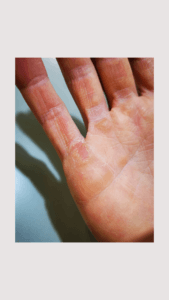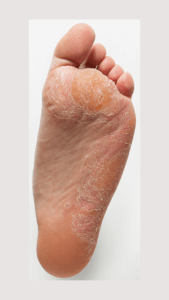Cracking Callus
The what, why, when and ways of a callus
What
A callus is an area of hard, thickened skin that build up on your body, most commonly, feet and hands.
Why
Callus build-up because your body protecting itself from rubbing, injury or pressure
We’ve all had calluses form at some point in our lives, especially on our hands. Sportspeople taking part in weightlifting, rowing or racquet sports will find calluses on their hands a common problem. Calluses on hands will often build up and then blister; the  top comes off and leaves the fragile new skin exposed to the stresses of these activities, the cycle to be repeated. As a podiatrist, I’m insured and experienced in treating hand problems as well as feet. If you are ever worried about a callus on your hand, please do get in contact, but we’re going to focus on calluses on feet for this blog.
top comes off and leaves the fragile new skin exposed to the stresses of these activities, the cycle to be repeated. As a podiatrist, I’m insured and experienced in treating hand problems as well as feet. If you are ever worried about a callus on your hand, please do get in contact, but we’re going to focus on calluses on feet for this blog.
You might have callus form on your feet for several reasons
- Shoes that are too narrow
- Sweaty feet
- Standing for long periods
- Wearing high heels
- Not wearing socks
- Ageing skin
When
Calluses require your attention because if you left them, the rough skin continue to form. It will crack, and these cracks turn into fissures (you’ve guessed it); these fissures will bleed, be painful, and likely to become infected. This process frequently happens on heels.
Catching a callus quickly will save you a lot of time, effort and money. Self-care is simple, gentle exfoliation and moisturise of your callus area daily. If it’s a stubborn callus, you will need a moisturiser with urea in it. Urea is a natural exfoliant and increases the skin’s permeability, which allows the cream to work its magic.
Ways
I’m here if your callus has become challenging to manage. Once the hard skin has built up, the creams will not be able to make an impact. I have a range of techniques that I can use to reduce hard skin and treat your skin.
 Whilst I’m busy carrying out this treatment, we will be discussing how to reduce the callus reforming. At the end of the day, we need to address the reason the callus developed and stop it. We will be chatting through your shoe choices, your sock preferences and discussing your skincare plan. (It always sounds crazy to have a skincare regime about your feet, but it is what everyone needs).
Whilst I’m busy carrying out this treatment, we will be discussing how to reduce the callus reforming. At the end of the day, we need to address the reason the callus developed and stop it. We will be chatting through your shoe choices, your sock preferences and discussing your skincare plan. (It always sounds crazy to have a skincare regime about your feet, but it is what everyone needs).
A couple of questions for you to consider- when did you last get your feet measured? Many of my client’s feet have changed size and shape, especially over the last year; it’s a good time to check you are wearing the right sized and shaped shoe. What are your socks made out of? Cotton hopefully isn’t the answer! I would recommend materials with moisture-wicking away properties such as bamboo and merino wool, especially if you have sweaty feet.
A few changes and a commitment from you to look after your feet will keep a whole raft of foot problems at bay, not just calluses. As we age, our skin loses its elasticity and ability to heal quickly, which is why your podiatrist’s number needs to be in your phone book!